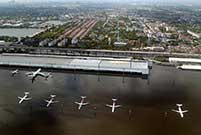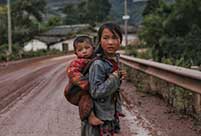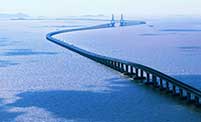

BEIJING, Dec. 29 -- The year 2016 will see China support its economic growth through supply-side policies and measures, moving the model away from one that is reliant on the demand-side strategy of capital investment and exports.
The authorities vowed to reduce property inventory, cut corporate burden through tax breaks, eliminate outdated industrial production and modernize agriculture.
Confronted with lingering downward pressure, the supply side is heralded by many as having the power to sustain growth, as it will improve and increase the supply of goods and services, consequently lowering prices and boosting consumption.
FINANCE, TAXATION
Finance Minister Lou Jiwei, speaking on Monday, said reforms in finance and taxation will be prioritized, and the proactive fiscal policy will be improved.
With just four industries -- finance, construction, property and consumer services -- yet to see business tax replaced with VAT, 2016 will see the completion of this reform, with all sectors covered by year end.
This measure partly aims to alleviate the corporate tax burden. From 2012 to the first half of 2015, it has resulted in tax savings of over 484.8 billion yuan (75 billion U.S. dollars), accounting for 0.2 percent of GDP in the period, according to a report by China International Capital Corp. Ltd.
Individual income tax and consumption tax will also be reviewed, according to Lou.
Throughout 2016, and beyond, the proactive fiscal policy will persist and become more forceful. China will gradually raise the fiscal deficit ratio, issue more treasury bonds and limit for new local government debt.
The fiscal-deficit-to-GDP ratio was raised to 2.3 percent for 2015, compared with the 2014 target of 2.1 percent. Financial analysts believe that this will be further increased to 3 percent or higher in 2016 in an effort to shore up growth.
A 3-percent deficit ratio is normally considered the line that should not be crossed, but some favor a higher ratio as it enables the government to cut taxes, thus, encouraging production.
DESTOCKING, URBANIZING
At a work conference on Monday, the Ministry of Housing and Urban-Rural Development disclosed that the destocking of the property inventory will be a major task for 2016, with measures to regulate the property market and encourage real estate companies to merge and restructure on the horizon.
The property market took a downturn in 2014 due to weak demand and a supply glut. This cooling continued into 2015, with sales and prices falling, and investment slowing.
To combat market weakness and the broader economic slowdown, the benchmark interest rates have been cut five times and home purchase restrictions eased to encourage loans and revive sales.
Now the urbanization drive has been identified as a solution to the inventory.
From next year, China will roll out policy to grant 100 million migrant workers urban resident status, according to Xu Shaoshi, head of the National Development and Reform Commission.
Nearly 55 percent of the population live in cities but less than 40 percent hold a "hukou" (official residence status) for the places where they live and work.
Industry observers expect this move to drive home sales and consumption.
China also planned to renovate six million run-down urban houses in 2016, the ministry said.
DISSOLVING OVERCAPACITY, NURTURING HIGH-TECH SECTORS
The Ministry of Industry and Information Technology (MIIT) said it will focus on upgrading traditional industries, cut excessive capacity and fostering high-tech manufacturing in 2016.
The MIIT will work out programs to address overcapacity and reduce inventory and costs for major sectors, such as machine manufacturing,automobile production and textiles.
A substantial proportion of production capacity of iron and steel, electrolytic aluminum, cement and plate glass was closed this year.
In addition, emerging and high-tech industries, such as intelligent manufacturing, will see increased support and the integration of industries and the Internet, or Industry 4.0, will be a major task.
AGRICULTURAL MODERNIZATION
China will also implement supply-side reform in agriculture to speed up modernization.
A statement released after the Central Rural Work Conference said China will ensure abundant and quality farm produce can satisfy market demand.
China will step up grain processing to cut stock; promote large-scale production, curb overuse of pesticides and fertilizers and introduce supportive services and networks to slash costs to overcome the current weaknesses, the statement said.
Minister of Agriculture Han Changfu said that in 2016. the ministry will deepen rural reform on land use right, as well as improve farming technology and the mechanization of farm work.
 Are these the world’s scariest landing strips?
Are these the world’s scariest landing strips? In pics: Left behind children in China
In pics: Left behind children in China Eight modern day engineering marvels of China
Eight modern day engineering marvels of China Chinese beauty with sexiest bottom
Chinese beauty with sexiest bottom Charming female bodybuilders of Chengdu University
Charming female bodybuilders of Chengdu University Polish sports stars strip off for risqué calendar
Polish sports stars strip off for risqué calendar Spectacular aerial photos of the Three Gorges
Spectacular aerial photos of the Three Gorges Contestants of Mrs. Globe pose for photo in Shenzhen
Contestants of Mrs. Globe pose for photo in Shenzhen
 Bikini models attend hot pot banquet in Hefei
Bikini models attend hot pot banquet in Hefei Top 20 hottest women in the world in 2014
Top 20 hottest women in the world in 2014 Top 10 hardest languages to learn
Top 10 hardest languages to learn 10 Chinese female stars with most beautiful faces
10 Chinese female stars with most beautiful faces China’s Top 10 Unique Bridges, Highways and Roads
China’s Top 10 Unique Bridges, Highways and Roads Laowai Internet sensations
Laowai Internet sensations Comfort women deal will not aid Tokyo
Comfort women deal will not aid Tokyo Parents demand air purifiers be installed in schools, not all successful
Parents demand air purifiers be installed in schools, not all successful A sign of disaffection, rural worship of Chairman Mao is treated with caution
A sign of disaffection, rural worship of Chairman Mao is treated with cautionDay|Week